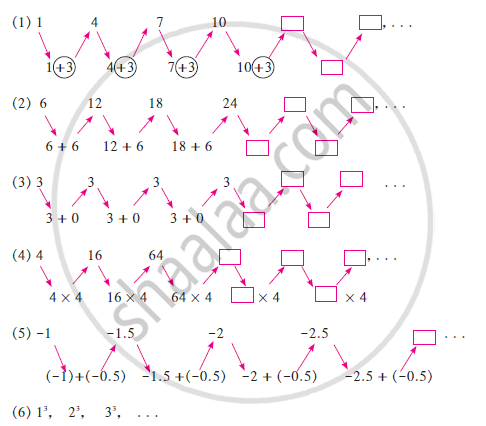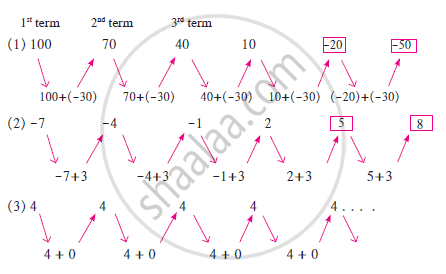Topics
Number Systems
Real Numbers
Algebra
Polynomials
Pair of Linear Equations in Two Variables
- Introduction to linear equations in two variables
- Graphical Method
- Substitution Method
- Elimination Method
- Cross - Multiplication Method
- Equations Reducible to a Pair of Linear Equations in Two Variables
- Consistency of Pair of Linear Equations
- Inconsistency of Pair of Linear Equations
- Algebraic Conditions for Number of Solutions
- Simple Situational Problems
- Pair of Linear Equations in Two Variables
- Relation Between Co-efficient
Quadratic Equations
- Quadratic Equations
- Solutions of Quadratic Equations by Factorization
- Solutions of Quadratic Equations by Completing the Square
- Nature of Roots of a Quadratic Equation
- Relationship Between Discriminant and Nature of Roots
- Situational Problems Based on Quadratic Equations Related to Day to Day Activities to Be Incorporated
- Application of Quadratic Equation
Arithmetic Progressions
Coordinate Geometry
Lines (In Two-dimensions)
Constructions
- Division of a Line Segment
- Construction of Tangents to a Circle
- Constructions Examples and Solutions
Geometry
Triangles
- Similar Figures
- Similarity of Triangles
- Basic Proportionality Theorem (Thales Theorem)
- Criteria for Similarity of Triangles
- Areas of Similar Triangles
- Right-angled Triangles and Pythagoras Property
- Similarity of Triangles
- Application of Pythagoras Theorem in Acute Angle and Obtuse Angle
- Triangles Examples and Solutions
- Concept of Angle Bisector
- Similarity of Triangles
- Ratio of Sides of Triangle
Circles
Trigonometry
Introduction to Trigonometry
- Trigonometry
- Trigonometry
- Trigonometric Ratios
- Trigonometric Ratios and Its Reciprocal
- Trigonometric Ratios of Some Special Angles
- Trigonometric Ratios of Complementary Angles
- Trigonometric Identities
- Proof of Existence
- Relationships Between the Ratios
Trigonometric Identities
Some Applications of Trigonometry
Mensuration
Areas Related to Circles
- Perimeter and Area of a Circle - A Review
- Areas of Sector and Segment of a Circle
- Areas of Combinations of Plane Figures
- Circumference of a Circle
- Area of Circle
Surface Areas and Volumes
- Surface Area of a Combination of Solids
- Volume of a Combination of Solids
- Conversion of Solid from One Shape to Another
- Frustum of a Cone
- Concept of Surface Area, Volume, and Capacity
- Surface Area and Volume of Different Combination of Solid Figures
- Surface Area and Volume of Three Dimensional Figures
Statistics and Probability
Statistics
Probability
Internal Assessment
- Terms and Common Difference of an A.P.
Definition
An arithmetic progression is a list of numbers in which each term is obtained by adding a fixed number to the preceding term except the first term.
Notes
Here in the sequences (1), (2), (3), (5), the similarity is that the next term is obtained by adding a particular number to the previous number. Each of these sequences is called an Arithmetic Progression.

Some sequences are given below. For every sequence, write the next three terms.
(1) 100, 70, 40, 10, . . . (2) -7, -4, -1, 2, . . . (3) 4, 4, 4, . . .
In the given sequences, observe how the next term is obtained.

In each sequence above, every term is obtained by adding a particular number to the previous term.
The difference between two consecutive terms is constant—the difference in ex. (i) is negative, in ex. (ii) it is positive and in ex. (iii) it is zero.
If the difference between two consecutive terms is constant, then it is called the common difference and is generally denoted by the letter d.
In the given sequence, if the difference between two consecutive terms `(tn +1- tn)` is constant, then the sequence is called Arithmetic Progression (A.P.). In this sequence, `tn +1- tn = d` is the common difference.
In an A.P., if the first term is denoted by a and the common difference is d, then,
`t_1 = a , t_2= a + d`
`t_3= (a + d) + d = a + 2d`
A.P. having the first term as a and common difference d is
a, (a + d), (a + 2d), (a + 3d), . . . . . .
This is called the general form of an AP.
Some more examples of AP are:
- The heights (in cm) of some students of a school standing in a queue in the morning assembly are 147, 148, 149, . . ., 157.
- The minimum temperatures (in degrees Celsius) recorded for a week in January in a city, arranged in ascending order, are
– 3.1, – 3.0, – 2.9, – 2.8, – 2.7, – 2.6, – 2.5 - The balance money ( in `₹` ) after paying 5 % of the total loan of `₹` 1000 every month is 950, 900, 850, 800, . . ., 50.
- The cash prizes ( in `₹` ) given by a school to the toppers of Classes I to XII are, respectively, 200, 250, 300, 350, . . ., 750.
- The total savings (in `₹`) after every month for 10 months when `₹` 50 are saved each month are 50, 100, 150, 200, 250, 300, 350, 400, 450, 500.
It is left as an exercise for you to explain why each of the lists above is an AP.
Note that in examples (a) to (e) above, only a finite number of terms exist. Such an AP is called a finite AP. Also, note that each of these Arithmetic Progressions (APs) has a last term. The APs in examples (i) to (v) in this section are not finite APs, so they are called infinite Arithmetic Progressions. Such APs do not have a last term.
Video Tutorials
Shaalaa.com | Arithmetic Progression part 1 (Introduction)
Series: 1
00:09:30 undefined
00:23:46 undefined
00:07:29 undefined
00:14:10 undefined
00:19:40 undefined
00:13:12 undefined
